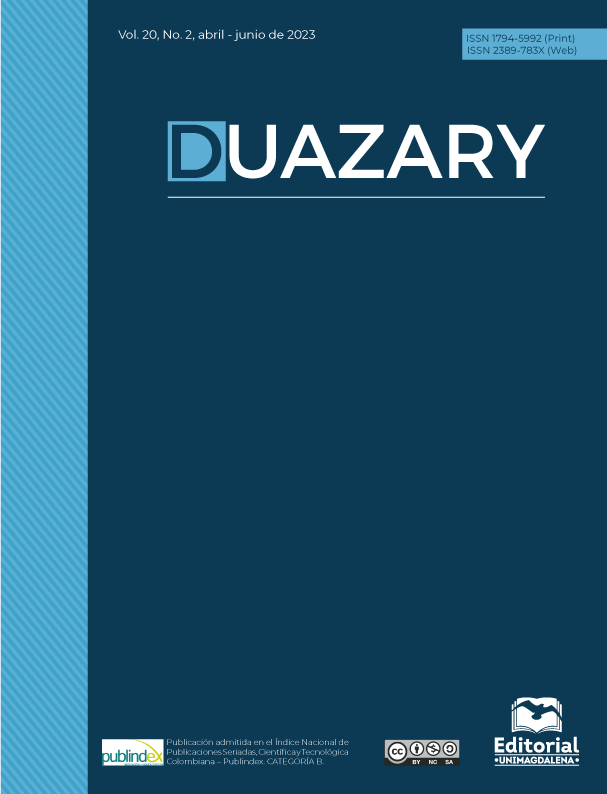Abstract
Candida lusitaniae infection is a rare entity with a prevalence of 1% in the group of associated species, has also been recognized as a pathogen associated with infections acquired in health care in severely immunosuppressed patients. We present the case of a 55-year-old patient with a history of hospital admission due to localized abdominal pain in epigastrium, which was accompanied by nausea, vomiting, fullness, hair, anorexia, and weight loss, diagnosed by imaging and histopathological studies with advanced gastric carcinoma, which developed sepsis by C. lusitaniae, a fungigram was obtained and management was given with fluconazole obtaining a satisfactory evolution in the patient. It is concluded case presented demonstrates that the clinical characteristics of this species are presented according to the natural history of sepsis.References
Valand N, Girija UV. Candida Pathogenicity and Interplay with the Immune System. Adv Exp Med Biol. 2021;1313:241-272. https://dx.doi.org/10.1007/978-3-030-67452-6_11
Pfaller MA, Diekema DJ, Turnidge JD, Castanheira M, Jones RN. Twenty years of the SENTRY Antifungal Surveillance Program: Results for Candida Species From 1997-2016. Open Forum Infect Dis. 2019; 15;6(Suppl 1):S79-S94. https://doi.org/10.1093/ofid/ofy358
Sánchez V, Vázquez JA, Barth-Jones D, Dembry L, Sobel JD, Zervos MJ. Epidemiology of nosocomial acquisition of Candida lusitaniae. J Clin Microbiol. 1992;30:3005-3008 https://doi.org/10.1128/jcm.30.11.3005-3008.1992
Kotey FC, Dayie NT, Tetteh-Uarcoo PB, Donkor ES. Infecciones del torrente sanguíneo por Candida: cambios en la epidemiología y aumento de la resistencia a los medicamentos. Infectar Dis (Auckl). 2021; 14: 11786337211026927. https://doi.org/10.1177/11786337211026927
Patricio P, Paiva JA, Borrego LM. Immune Response in Bacterial and Candida Sepsis. Eur J Microbiol Immunol, 2019;9(4):105-113. https://doi.org/10.1556/1886.2019.00011
Portillo J, Cerón E, Toro C, Chaucanez Y. Endocarditis infecciosa debida a Candida lusitaniae en un lactante menor: Reporte de caso. Infectar. 2020; 24(4): 266-269. https://doi.org/10.22354/in.v24i4.888
Mendoza-Reyes DF, Gómez-Gaviria M, Mora-Montes HM. Candida lusitaniae: Biology, Pathogenicity, Virulence Factors, Diagnosis, and Treatment. Infect Drug Resist. 2022;15:5121-5135. https://doi.org/10.2147/IDR.S383785.
Pappas PG, Kauffman CA, Andes DR, Clancy CJ, Marr KA, Ostrosky-Zeichner L, et al. Clinical Practice Guideline for the Management of Candidiasis: 2016 Update by the Infectious Diseases Society of America. Clin Infect Dis. 2016; 15;62(4):e1-50. https://doi.org/10.1093/cid/civ933
Panizo M, Reviákina V. Candida albicans y su efecto patógeno sobre las mucosas. Rev. Soc. Ven. Microbiol. 2001; 21(2): 38-45.
Arikan-Akdagli S, Gülmez D, Doğan Ö, Çerikçioğlu N, Doluca Dereli M, Birinci A, et al. First multicentre report of in vitro resistance rates in candidaemia isolates in Turkey. J Glob Antimicrob Resist. 2019;18:230-234. https://doi.org/10.1016/j.jgar.2019.04.003
Lazo V, Hernández G, Méndez R. Candidiasis sistémica en pacientes críticos, factores predictores de riesgo. Horiz. Med. 2018;18 (1): 75-85. http://dx.doi.org/10.24265/horizmed.2018.v18n1.11.
Steinbach WJ, Perfect JR, Cabell CH, Fowler VG, Corey GR, Li JS, et al. A meta-analysis of medical versus surgical therapy for Candida endocarditis. J Infect. 2005;51(3):230-247. https://doi.org/10.1016/j.jinf.2004.10.016
Lobaina T, Zhurbenko R, Rodríguez C, Zayas Y, Rodríguez A. Identificación de especies de Candida de importancia clínica con un método auxonograma modificado. Rev Cubana Med Trop. 2010; 62(1): 66-81.
Favel A, Michel-Nguyen A, Datry, A, Challier S, Leclerc F, Chastin C. Susceptibility of clinical isolates of Candida lusitaniae to five systemic antifungal agents. J Antimicrob Chemother. 2004;53:536-529. https://doi.org/10.1093/jac/dkh106
Runco R, Salim R. Candida lusitaniae en un paciente pediátrico inmunocomprometido: éxito terapéutico del voriconazol. Boletín Micológico. 2005;20:97–102. https://doi.org/10.22370/bolmicol.2005.20.0.282
Zurita MS. Situación de la resistencia antifúngica de especies del género Candida en Perú. Rev. perú. med. exp. salud publica. 2018; 35(1): 126-131. https://doi.org/10.17843/rpmesp.2018.351.3563
Raja A, Park J. Disseminated Candida lusitaniae: Nosocomial acquisition secondary to an indwelling urinary catheter. Case Rep Infect Dis. 2021:6632730. https://doi.org/10.1155/2021/6632730
Apsemidou A, Füller MA, Idelevich EA, Kurzai O, Tragiannidis A, Groll AH. Candida lusitaniae Breakthrough Fungemia in an Immuno-Compromised Adolescent: Case Report and Review of the Literature. J Fungi (Basel). 2020; 6(4):380. https://doi.org/10.3390/jof6040380
Rahmati E, Correa AJ, She RC. A budding case of infectious endocarditis: Candida lusitaniae. IDCases. 2019 Dec 19;19:e00679. https://doi.org/10.1016/j.idcr.2019.e00679
Mishra R, Kelly P, Toolsie O, Ayyadurai P, Adrish M. Uncommon cause of fungemia in a patient with renal cell cancer: A case report of Candida lusitaniae Fungemia. Medicine (Baltimore). 2017;96(45):e8510. https://doi.org/10.1097/MD.0000000000008510
Pietrucha-Dilanchian P, Lewis RE, Ahmad H, Lechin AE. Candida lusitaniae catheter-related sepsis. Ann Pharmacother. 2001; 35(12):1570-1574. https://doi.org/10.1345/aph.1A077

This work is licensed under a Creative Commons Attribution-NonCommercial-ShareAlike 4.0 International License.
Copyright (c) 2023 Universidad del Magdalena

